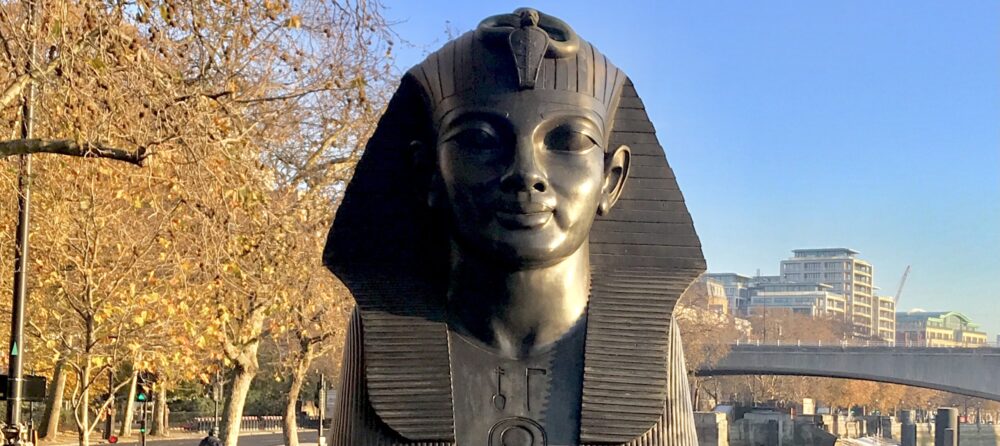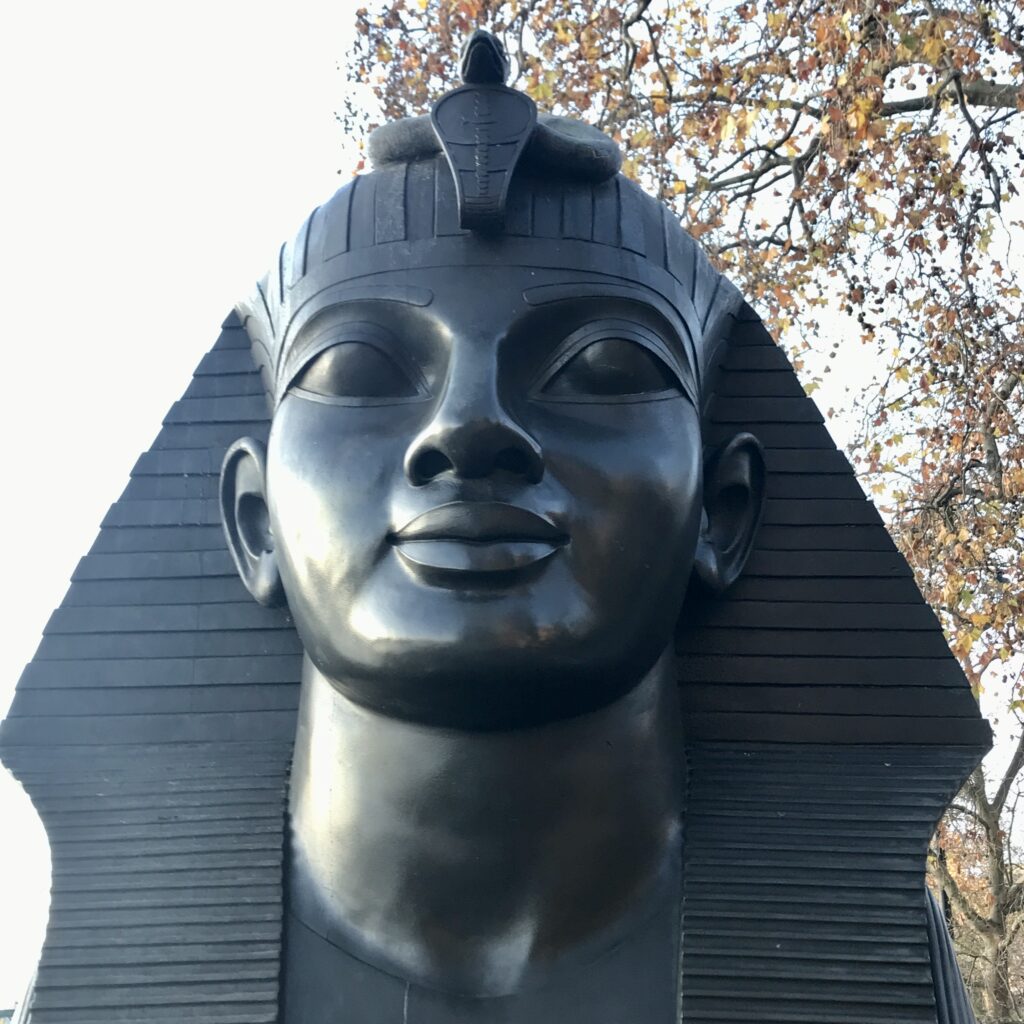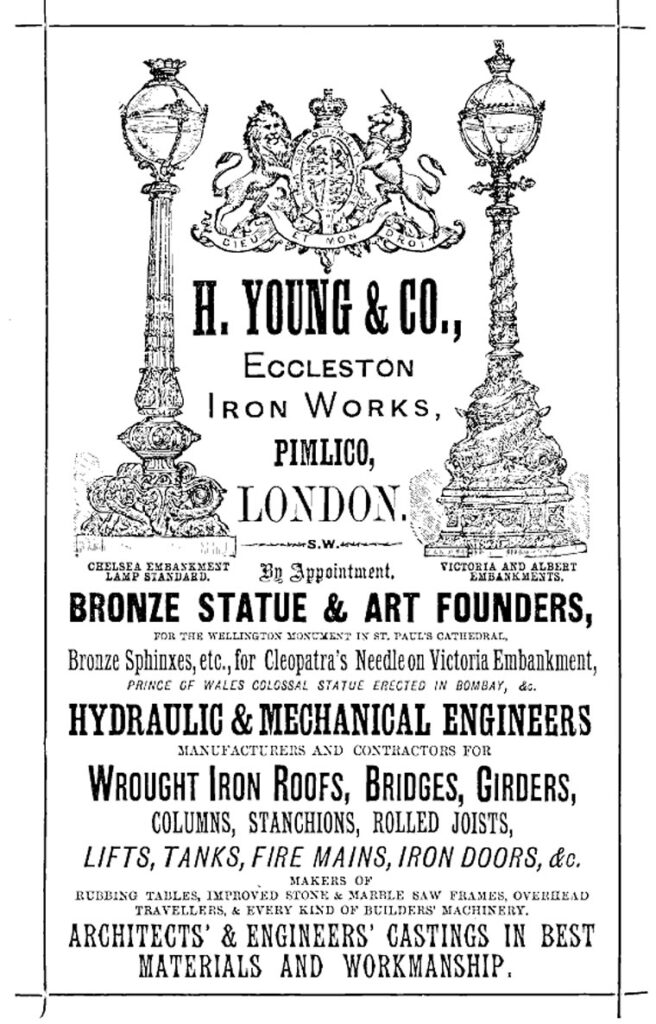
As an adventure in Google, in maps, in diving down rabbit holes, my plan to post up a photo I took of one of the protective sphinxes that watch over Cleopatra’s Needle on the Embankment, is a lesson in a) how easy it is to research things on the web, b) the limits on researching things on the web, and c) how I can waste hours of time when I Should Be Doing Something Important.
To begin near the beginning. A swift bit of googling brought up that the sphinxes were sculpted by George John Vulliamy, the ‘superintending architect’ to the Metropolitan Board of Works (the precursor to the London County Council) which was responsible for the growing city’s infrastructure, including the Embankment along the north of the Thames.
As well as the sphinxes, Vulliamy created the ornate lamp standards (the so-called ‘dolphin lamp posts’, although they’re actually sturgeons), as well as the camel and sphinx benches that still adorn the Embankment, some 150 years after they were cast.
Lots of sites will tell you that this casting was done at the ‘Ecclestone Ironworks, Pimlico’, so I thought I’d try and find more about that place, and to see if I could find the foundry on an old map (Layers of London and the National Library of Scotland have excellent resources for this), but how to narrow down where to look?
A bit more googling brings up the fact that the name of the business wasn’t ‘Ecclestone Ironworks’ but ‘H(enry) Young & co’, founded in 1871 and used by ‘the leading sculptors’ of the time, including Joseph Boehm (and his pupil, Victoria’s daughter Princess Louise) and Alfred Stevens, for whom Young’s cast (in bronze) the Wellington memorial for St Paul’s Cathedral. They also cast the statue of Lord Derby in Parliament Square.
Gloriously, Young’s still exist, now as ‘H Young Structures’ in Norfolk, and their ‘our history‘ page states that the firm was set up in Ecclestone Street. A foundry, even one which specialised in sculptural rather than structural works (Young’s opened a bigger factory for such ironwork in Nine Elms later in the 1870s) must have had a reasonable footprint, but a close examination of the maps of Ecclestone Street in the 1890s shows no building named either ‘H Young’, or ‘foundry’ or ‘ironworks’. (Although there is a ‘coach manufactory’ and the ‘Pimlico patent wheelworks’.)
I tend towards thinking that perhaps the H Young website is wrong, that Ecclestone Street might have been assumed to be the address of the ironworks – certainly, other websites just give the much less specific ‘Ecclestone’ (implying the area). By 1891 they also use the address of 12 Victoria Street, although looking at the contemporary map I can only conclude this was perhaps the sales/head office address as Victoria Street was residential and commercial, rather than industrial.
So several hours, and about a dozen chocolate biscuits, after giving myself five minutes to look up who sculpted the Embankment sphinxes, I know more than I did, but less than I want (and another rabbit hole to drop into, here’s a picture of Mr Chantry’s foundry in Eccleston Place from 1830, metal casting in the area a couple of generations earlier).
If anyone out there knows where the Ecclestone Ironworks were, or might have been, drop something in the comments. I shall keep my eyes open for anything that looks as if it might have housed an ironworks the next time I pass through Pimlico.


